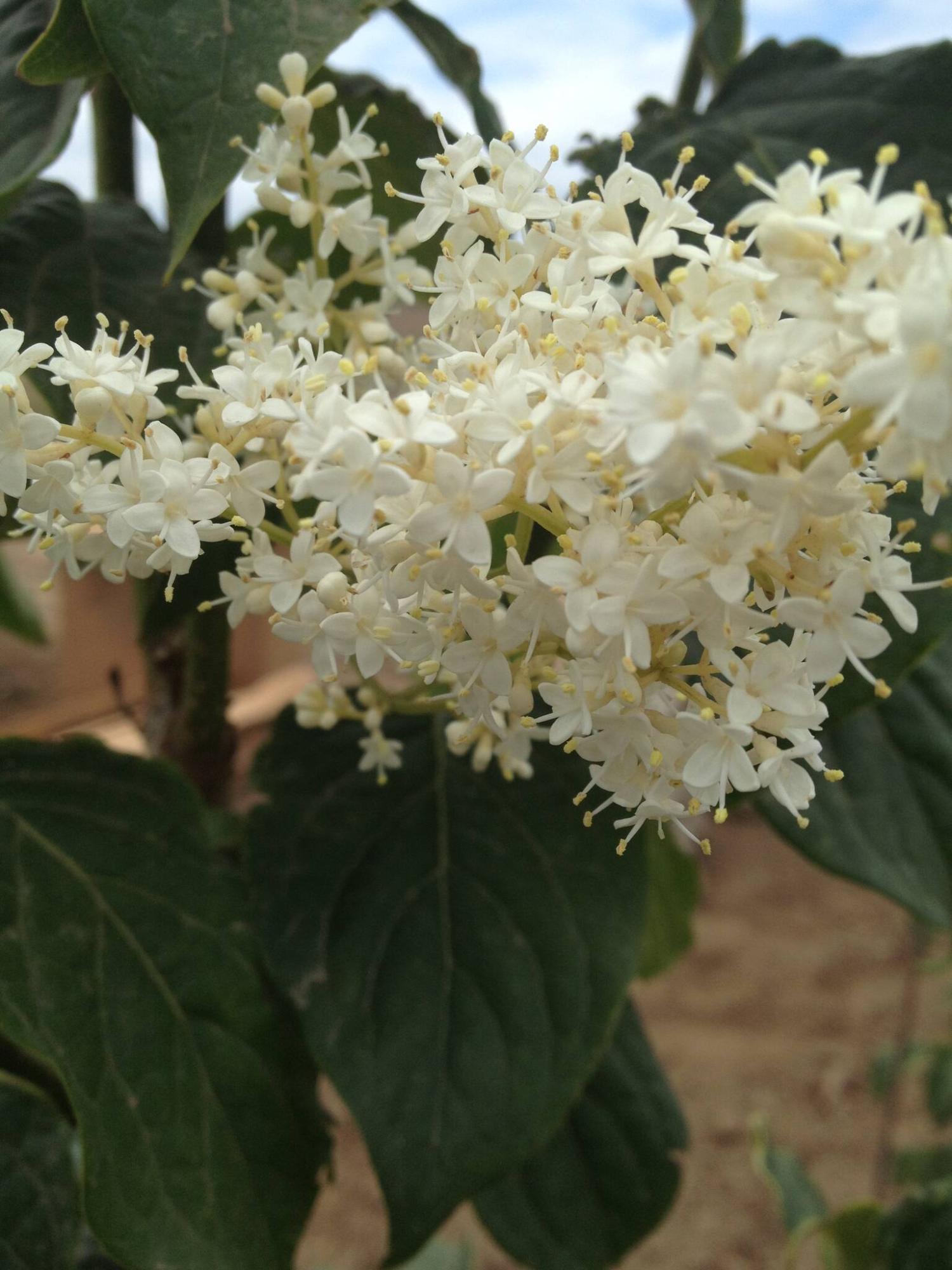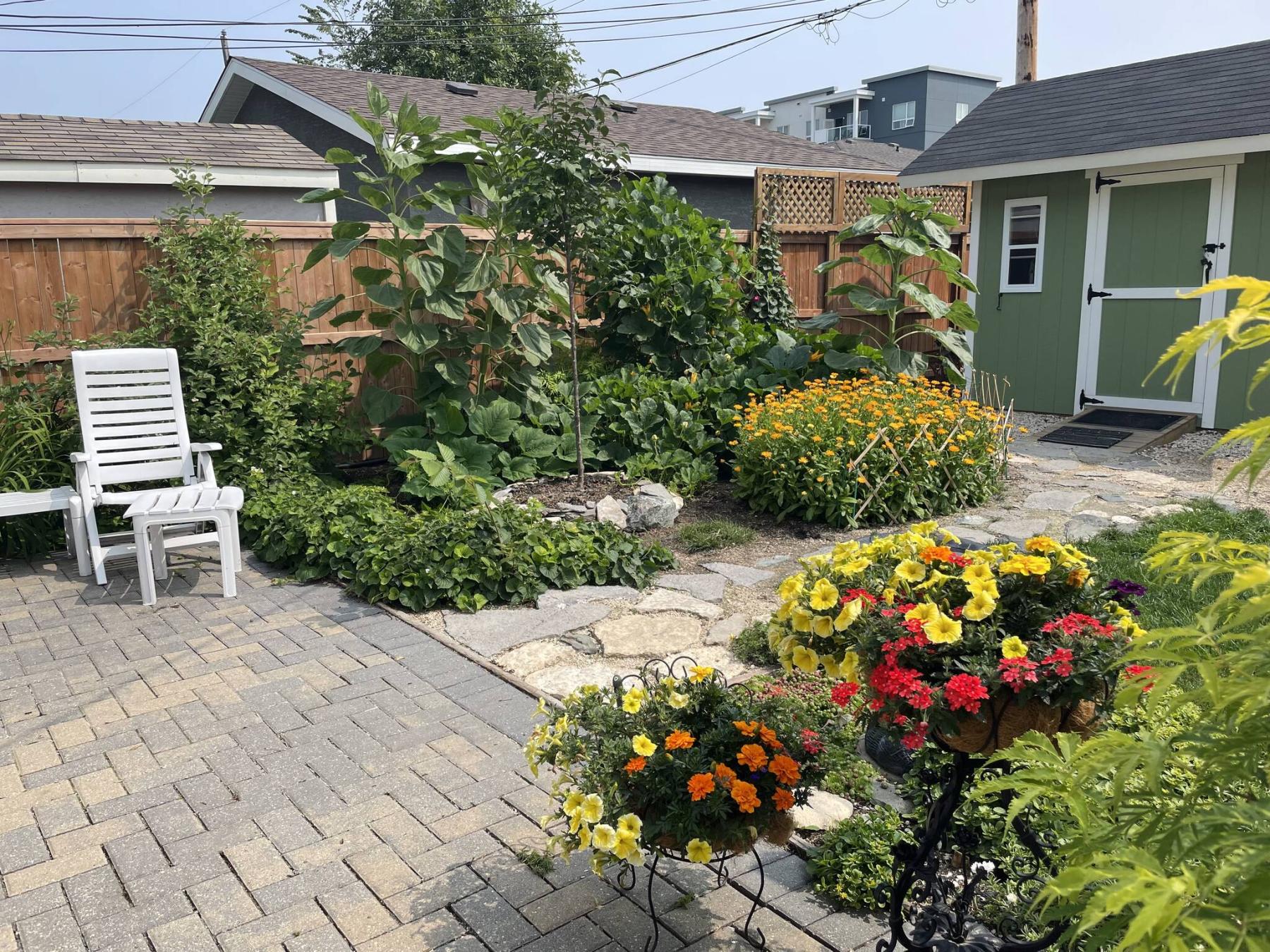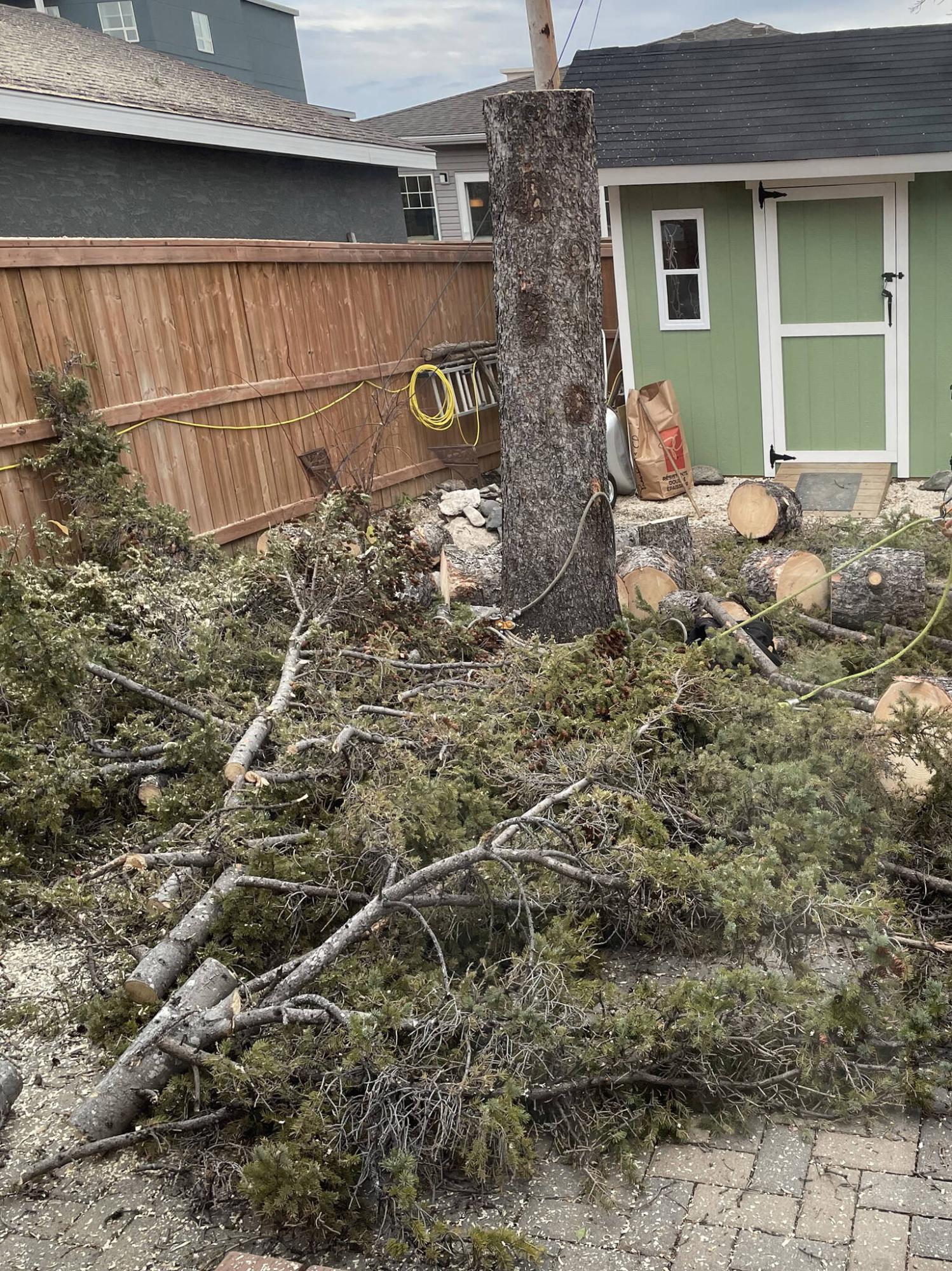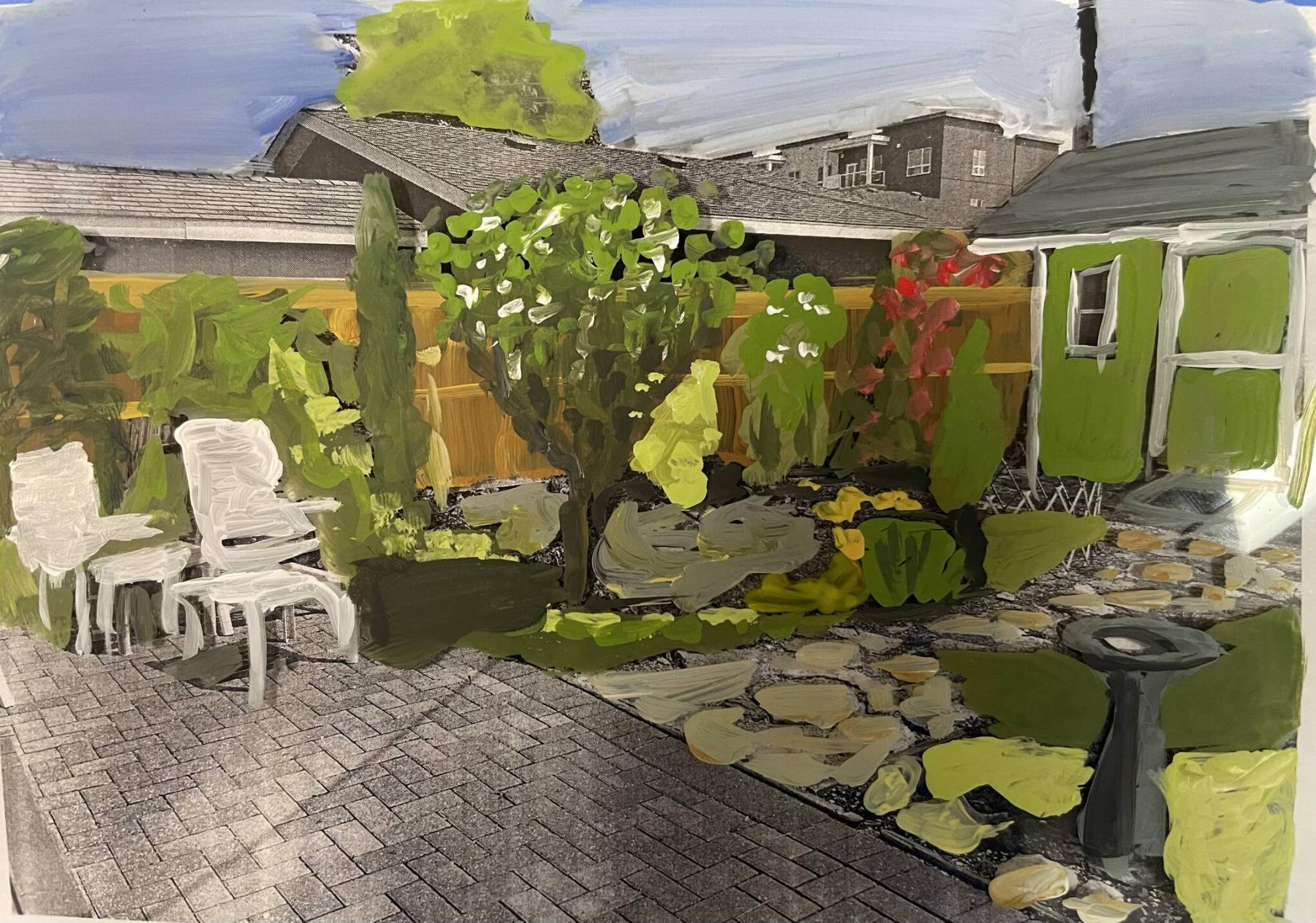
Michelle Paterson
Artist Michelle Paterson received a first place ribbon for her entry in the Red River Exhibition Juried Art Show.

Bailey Nurseries
Japanese Tree Lilac is a compact tree with creamy white fragrant flowers that attract pollinators.

Michelle Paterson
After the loss of a mature tree, a newly planted Japanese Tree Lilac brings fresh promise and landscape restoration.

Michelle Paterson
Cutting down this 60-year-old spruce tree meant the loss of privacy, shade, and beauty in this St. James backyard.
For the past 20 years, Michelle Paterson’s favourite thing to do every morning during the summer has been to step outside her back door and into her garden. With a cup of coffee in hand, she enjoyed wandering through, sometimes still in her housecoat, to look at her plants, listen to the sounds of birds and relax on her patio. A mature spruce tree next to her patio provided the cooling shade and privacy she craved but also served an aesthetic purpose by screening the outer walls of her neighbour’s shed and garage from view.
Last year, Paterson made the difficult decision to have the 60-year-old spruce tree removed by an arborist. Paterson inherited the spruce tree when she and her husband purchased their property in St. James in 1998. But the tree was in slow decline with significant amounts of older needles falling off lower and interior branches. Paterson hired an arborist to assess the tree and keep it healthy but when large spruce trees at her cottage were uprooted by a storm, she became concerned about safety issues.
Paterson obtained quotes for professional tree removal which ranged from $500.00 to $3000.00. “The complicated part was all the overhead wiring between the branches,” said Paterson. The ailing tree – habitat for numerous species of birds and pollinators — was removed last fall. Overnight, her backyard went from a shady, private space to one that felt bleak and exposed. When I talked to Paterson in June, she said she was trying to think positive about a new beginning but with the loss of privacy and her neighbour’s garage and shed suddenly in full view as well as the starkness of the area adjacent to her patio, feeling positive was a struggle.
Paterson is an artist. She paints landscapes and portraits of people and pets and has won many awards for her artwork. In June, Paterson received a First Place Ribbon for a painting she entered in the Red River Exhibition Juried Art Show. She also won a People’s Choice Award for another painting and painted a scene in real-time at the event which sold before the paint was dry.
Visualization is a technique that assists artists in their creative process. Garden design, too, is an art. Since Paterson and her husband had very different ideas for developing the treeless area next to their patio – he wanted a gazebo, and she wanted a replacement tree – she decided to create two paintings. She began by taking a black and white photograph of the area of her garden that was to be renovated.
“To paint the two options being considered, I printed off two copies (of the photo) and put a sheet of glass on top to paint on so that I could follow perspectives and proportions easily,” said Paterson. Getting architectural lines right can be challenging, she said. “Drawing a simple shed with a door and windows is not nearly as easy as you’d expect!”
Paterson works with acrylic paints. “I can easily scrape it off the glass or make changes. I saw this technique used for trying out different backgrounds and am very pleased with how well it works.”
The finished paintings were an important step in helping Paterson to visualize the different options for her landscape. A gazebo would require the installation of a concrete base but when the estimate was obtained, it was also recommended that the existing brick patio and flagstone walkway be replaced with concrete to ensure continuous flowing lines. The projected cost of the project — $12,000.00 – put an end to that idea. “It was boring and costly.” Paterson’s desire for a replacement tree won out.
Paterson’s painting which showed the existing patio and walkway and a leafy tree that hides from view the architectural lines of her neighbour’s garage and shed was all the inspiration she needed to feel confident again that she could restore aesthetic appeal to her landscape and regain some privacy.
Paterson, who worked for eleven years in the tree and shrub department at a local garden centre, purchased a Japanese Tree Lilac (Syringa reticulata) in a 10-gallon pot. She visited several nurseries but could not find a larger specimen of Japanese Tree Lilac. She wanted a Japanese Tree Lilac because it is an attractive small tree with cherry-like bark and large creamy white fragrant flowers in late spring and early summer. Japanese Tree Lilac is tolerant of alkaline soils. The long-time industry standard is a cultivar known as Ivory Silk, but other popular cultivars include Ivory Pillar and Summer Storm which is a vigorous, fast-growing variety with a broadly upright shape. Japanese Tree Lilac cultivars generally mature to a height of 7 metres and width of 6m.
“My choice for a Japanese Tree Lilac was confirmed following this year’s worm damage to trees in my neighbourhood,” said Paterson. “The worms didn’t touch the lilacs. I like the Japanese Tree Lilac’s large foliage and dense canopy and of course, the added floral benefit.” The cost was $200.00 which included the purchase of a product that contains mycorrhizae, a beneficial fungus. Most garden retailers offer an extended warranty for trees with the purchase of mycorrhizae; however, most garden soils already contain mycorrhizae and many horticulturists recommend applying compost instead to boost your soil’s fertility.
Trees act not only as visual barriers but also as sound barriers. They provide wind protection and cool the air. A newly planted tree takes several years before reaching maturity. Paterson is realistic about how long it will take before her tree provides shade and privacy. She is no stranger to compromise. Much of the privacy her backyard oasis offered had been sacrificed when Silver Heights Collegiate was torn down in 2007 and two-to-four-story condominiums were built on the former sports fields directly across from Paterson’s property, separated only by a shared back lane. Fortunately, existing fruit trees and tall shrubs – plum, apple, elder, and saskatoon — along her property line along with a beautiful Hawthorn tree and lilac bushes provide a leafy backdrop in her backyard garden. Over the years she has planted understory trees such as nannyberry (Viburnum lentago).
“My garden has evolved from whatever has lasted through the years,” said Paterson. She grows a wide range of perennials which include hostas, ligularia, lilies, Veronica speedwell, and sedums. “I have a huge volunteer mass of morning glories every year, as well as shrub roses and a small veggie garden with tomatoes and beans.” Paterson could choose to divide some of her existing perennials and plant them temporarily around her new Japanese Tree Lilac. Instead, she has transformed the area with container gardens, giant sunflowers and a pumpkin vine that has been trained to grow vertically on a short ladder. Existing deciduous shrubs such as Siberian dogwood, Lemony Lace elderberry, and mock orange are now thriving in the brighter light since the spruce tree was removed.
Paterson’s replacement tree was installed a short distance from where the spruce tree was formerly planted. Admittedly, said Paterson, digging the planting hole was challenging because stump grinding leaves some of the stump and root system intact. “The lilac is looking very happy with strong new growth.”
colleenizacharias@gmail.com




